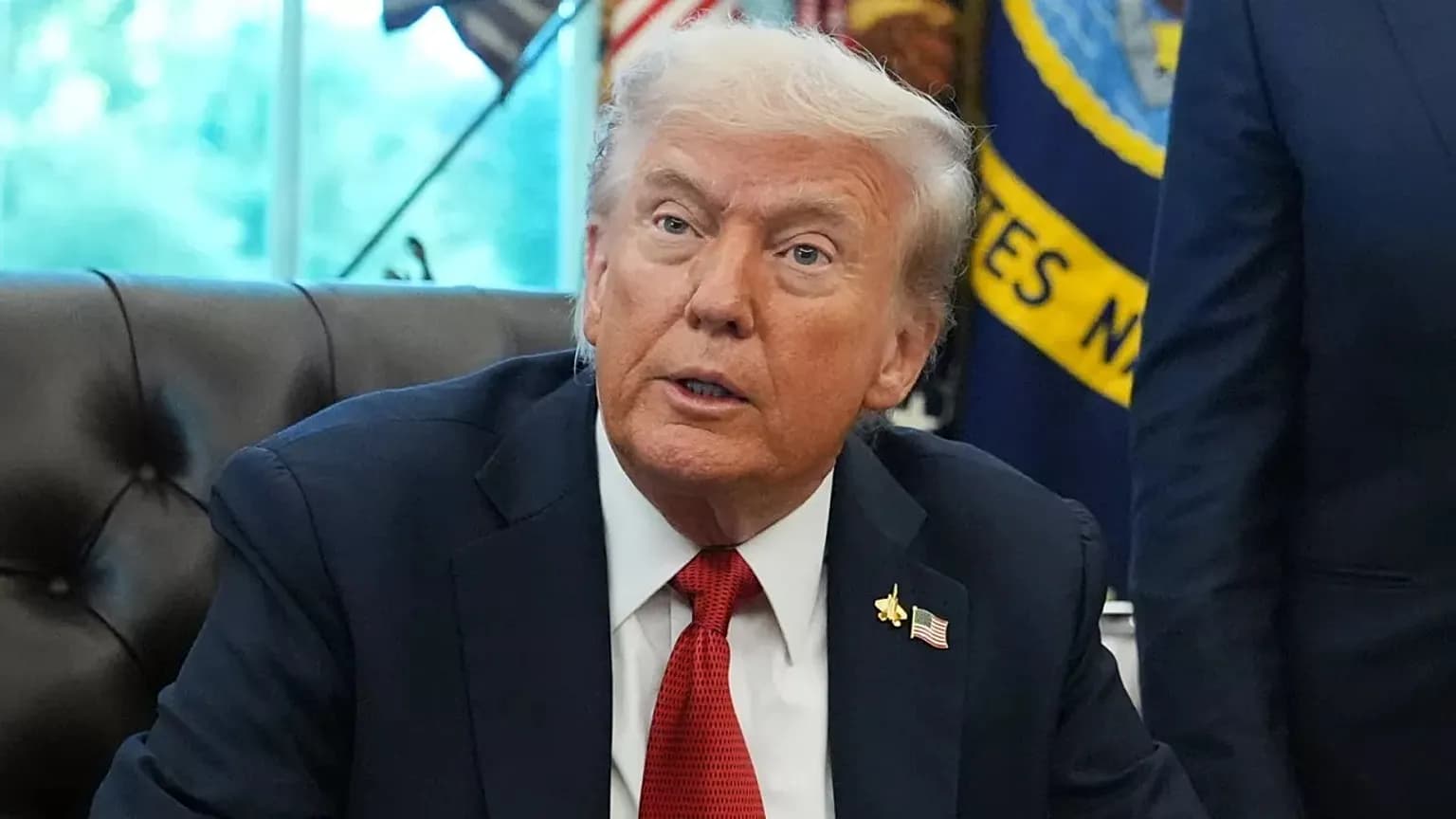Loading News Article...
We're loading the full news article for you. This includes the article content, images, author information, and related articles.
We're loading the full news article for you. This includes the article content, images, author information, and related articles.
US President Donald Trump's potential decision to supply Ukraine with long-range Tomahawk cruise missiles marks a significant escalation in the ongoing conflict with Russia, prompting international debate on its implications for global security and Kenya's neutral diplomatic stance.

US President Donald Trump is reportedly considering sending Tomahawk long-range cruise missiles to Ukraine, a move he described as potentially "a new step of aggression" in the ongoing war with Russia. This consideration follows a recent phone call between President Trump and Ukrainian President Volodymyr Zelensky, where Zelensky advocated for enhanced military capabilities to launch counter-attacks against Russian forces. The potential transfer of these advanced weapons has ignited discussions among analysts regarding its immediate impact on public debate and policy execution, with various stakeholders calling for clarity on timelines, associated costs, and necessary safeguards.
The United States has been a significant military backer of Ukraine since Russia's initial invasion in 2014, with aid substantially increasing after the full-scale invasion in February 2022. Since 2014, the US has provided approximately $69.7 billion in military assistance to Ukraine. This aid has included a wide array of equipment, from air defense systems and munitions to anti-tank weapons and armored vehicles. The potential introduction of Tomahawk missiles, known for their precision and long-range capabilities, would represent a notable shift in the type of weaponry supplied to Ukraine.
The transfer of US-origin long-range cruise missiles to allies and their subsequent re-export to Ukraine is governed by the Arms Export Control Act and the International Traffic in Arms Regulations. These regulations classify cruise missiles and their subsystems as significant military equipment, necessitating State Department licensing and binding end-use assurances. Furthermore, any such transfer must comply with the Missile Technology Control Regime (MTCR) guidelines, which impose a strong presumption of denial for Category I items, including cruise missile systems capable of carrying a 500-kilogram payload to distances of 300 km or more.
Kenya has maintained a neutral stance on the Russia-Ukraine conflict, advocating for dialogue and adherence to the UN Charter principles of national sovereignty and territorial integrity. President William Ruto has consistently emphasized diplomacy as the path to peace, acknowledging the war's far-reaching impact on global supply chains for grains, fuel, and fertilizers. While Kenya initially criticized Russia's invasion, its foreign policy has since shifted towards a more non-aligned approach, aligning with the positions of the G77 and the African Group.
Concerns have also emerged regarding the alleged trafficking of Kenyan citizens to Russia, where they are reportedly forced to fight in the war. The Kenyan government, through its embassy in Moscow, is investigating these claims, prompted by cases such as that of athlete Evans Kibet, who alleged he was tricked into fighting after his tourist visa expired. This situation highlights the vulnerability of young people in African countries with high unemployment rates to deceptive recruitment schemes.
The potential deployment of Tomahawk missiles could significantly alter the dynamics of the conflict, enabling Ukraine to conduct deep-penetration attacks on high-value targets within Russian territory. This capability could force Russian forces into tactical retreats and costly relocations of military infrastructure. However, Russia has warned of severe consequences, suggesting that supplying such advanced military technology to Ukraine could lead to a direct conflict between Russia and NATO countries.
From a broader perspective, the provision of military aid, while intended to promote stability, can sometimes exacerbate conflicts and increase tensions. Research suggests that foreign military assistance can be associated with poorer political-institutional conditions in recipient countries, potentially leading to grievances and increased non-state violence.
While President Trump has indicated a willingness to consider sending Tomahawks, he has also sought clarification on Ukraine's intended use and specific targets. The exact timelines for delivery, the total financial commitment, and the specific safeguards to prevent escalation remain uncertain. The export of Tomahawk missiles has historically been restricted due to the Missile Technology Control Regime, though recent geopolitical shifts have seen a softening of this position for some allies.
The discussions around supplying Tomahawk missiles have moved from speculative to highly likely, particularly after media reports in early October 2025 suggested President Trump had largely made up his mind. However, no official NATO or US Department of Defense publication as of Monday, October 7, 2025, explicitly indicates a direct Tomahawk pathway for Ukraine, with documents emphasizing broader long-range categories and production mobilization. The US Department of State approved a Foreign Military Sale of nearly 200 Tomahawk missiles to the Netherlands in April 2025, which draws on the same production pipelines that any transfer to NATO for Ukrainian use would require.
Observers will be closely watching for official announcements from the US government regarding the approval and logistics of any Tomahawk missile transfers to Ukraine. The international community will also be keen to see Russia's response to such a development and how it might impact the trajectory of the conflict. Domestically, Kenyans will be monitoring the government's efforts to address the alleged trafficking of its citizens into the conflict zone and to ensure their safety and repatriation.
Keep the conversation in one place—threads here stay linked to the story and in the forums.
Other hot threads
E-sports and Gaming Community in Kenya
Active 6 months ago
Popular Recreational Activities Across Counties
Active 6 months ago
Investing in Youth Sports Development Programs
Active 6 months ago
The Role of Technology in Modern Agriculture (AgriTech)
Active 6 months ago